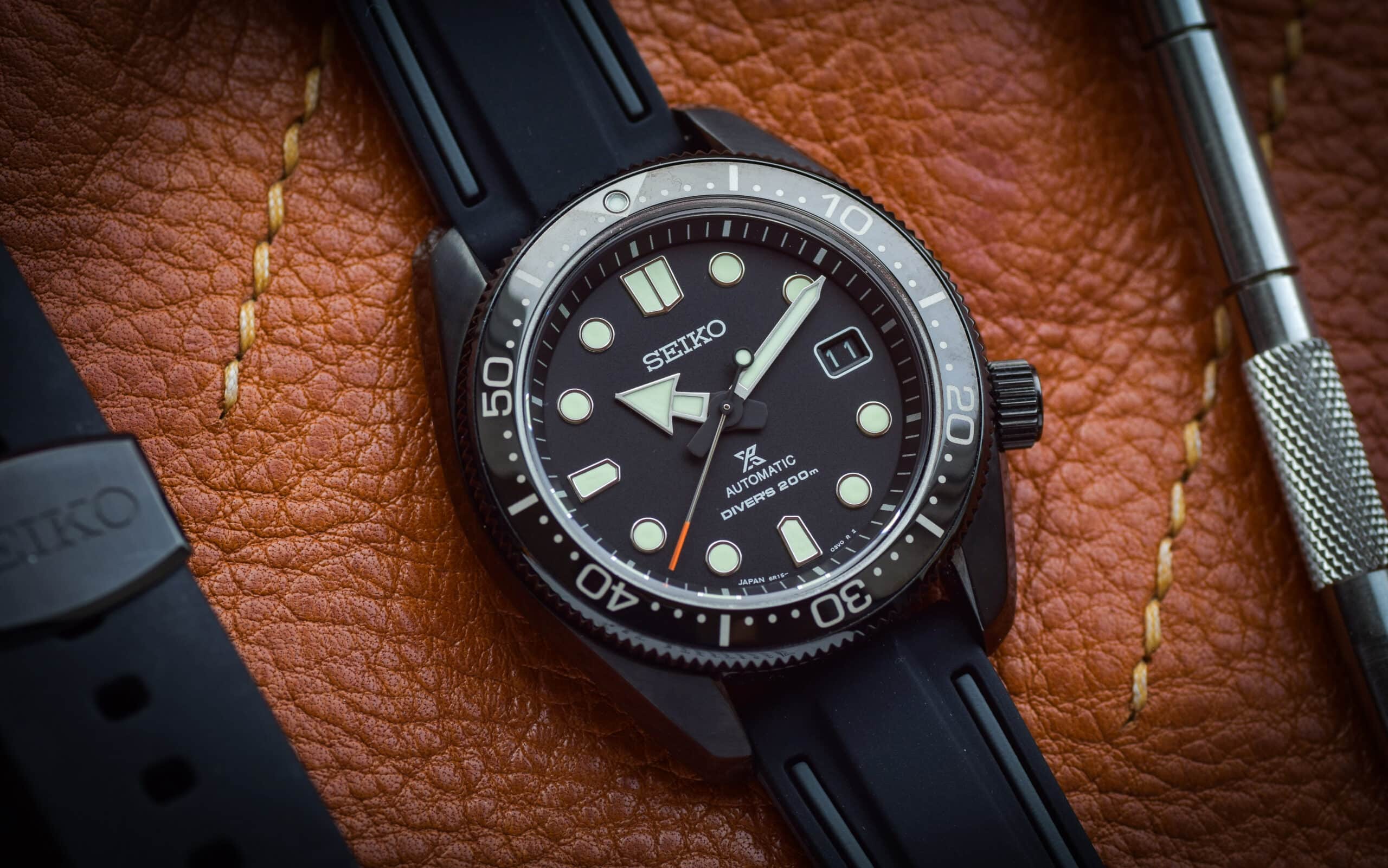In sports, timing is everything. Sprinters hope to beat record times, while hunters scrupulously clock migratory patterns. Any halfway decent football coach knows that using his allotted timeouts is a true art. In the case of professional divers, timing is a matter of life and death. This is why an ISO-compliant wristwatch requires a dive timer, usually in the form of a unidirectional bezel.
If you wear one, you should probably know how to use a dive watch bezel. Sure, pro divers have professional computers with more sophisticated timers than a Submariner can provide. And yes, many who sport a Superocean aren’t necessarily taking it to the seas. Still, operating a dive bezel is a good contingency plan, and more realistically, a neat party trick.

What is a rotating bezel used for?
A rotating bezel on a dive watch is used to clearly measure a diver’s time in the water, to ensure their air tank doesn’t run low. These functional top rings are usually split into 60-minute sections, since most scuba tanks have about 60 minutes worth of oxygen.
This is also why it’s important for the bezel to be unidirectional. If you accidentally and unwittingly bump your bezel against a sea rock of some sort, it can only move to the left. Thinking you have less time under water is definitely less dangerous than thinking you have more time.
The bezel can also be used to ensure you stay within the no-decompression limit (NDL), when used with the Recreational Diving Planner (RDP) that you can find on the Professional Association of Diving Instructors (PADI) website—or anywhere really. Just Google it.
Basically, in recreational diving, you want to stay within the no-decompression limit since it doesn’t require you to take a decompression break on the way up. Why? Well, if you ascend too hastily, nitrogen forms bubbles inside of you. Unpleasant side-effects include sickness, nerve damage, paralysis, and also getting dead.

Hamilton Khaki Navy Scuba Auto
- Movement: H-10 Automatic
- Case Diameter: 43mm
- Water Resistance: 300 meters
- Price: $1,075

Using a rotating bezel for diving
So you’re going on a dive. Let’s say that it’s 1960 and there are no dive computers. Or we could say that it’s the present day, and you want to prepare a plan C, in case your dive computer fails and your divemaster or diving buddy gets eaten by a shark.
The pip at the top of your bezel, usually a triangle though Tudor loves a circular pip, represents zero.
Let’s now say you’ve prepped for a 30-minute dive and you want to go 35 feet deep, or just over 10 meters. Good choice, by the way, because according to your PADI Recreational Dive Planner, that’s well within the NDL and you won’t have to make any safety stops to avoid the prior mentioned nitrogen drama.
Let’s also say that it’s 2:30 pm. You’ll turn your bezel counter-clockwise so that the pip of the bezel is where your minute hand currently is, that is the 30-minute marker on the dial.
The 30-minute marker on the bezel is now aligned with the 12 o’clock index on the dial. You’ll now start your descent to no deeper than 35 feet.
Once the minute hand gets to this 12 o’clock index, meaning 3:00 pm in this case, and otherwise known as 30 minutes later as your bezel now indicates, it’s time for your ascent.
In case you want to sound like a pro when you’re explaining this to friends, that full 30 minutes starting from the start of descent to the start of ascent, is called your total bottom time.

Hamilton Khaki Navy Scuba Auto
- Movement: Seiko 8L35 Automatic
- Case Diameter: 44.3mm
- Water Resistance: 300 meters
- Price: $3,100

Shinola Lake Michigan Monster Automatic
- Movement: SW200-1 Automatic
- Case Diameter: 43mm
- Water Resistance: 300 meters
- Price: $1,650
Outside of the ocean
If you’re doing multiple dives or going deeper for longer, you can use your bezel and the RDP to figure out when you’d take safety stops during your ascent and for how long. But, when it comes to ensuring nitrogen is safely leaving your body, you’re definitely, obviously better off using modern technologies.
Think of your dive watch’s bezel as a fun plan B for less serious situations on wet or dry land.
Perhaps you’re helping a swimmer friend count how many laps he can swim in 25 minutes. Your trusty Seiko Prospex may be the best tool for the job, lest you drop your phone in the pool.
You know the drill now. Let’s say it’s 1:13pm. Move your pip to where the minute hand is. The 25-minute marker on the bezel will now align with the 38-minute marker on the dial. Keep a tally of his laps until the minute hand gets to that point, otherwise known as 1:38pm.
Other potential times to use a dive bezel? As a kitchen timer if your voice AI is down and your phone is dead, or, even more likely, when you need a timer during a no-screens, no-tech mental health moment.
Maybe you’re trying to clock some outdoor runs and you prefer doing this while disconnected. Some of these are a stretch, but so is using a wristwatch to tell time. Still, both are undeniably fun to do.
Disclosure: Clicking on these links and making a purchase may earn us a small referral fee, at no extra cost to you. Learn more here.



